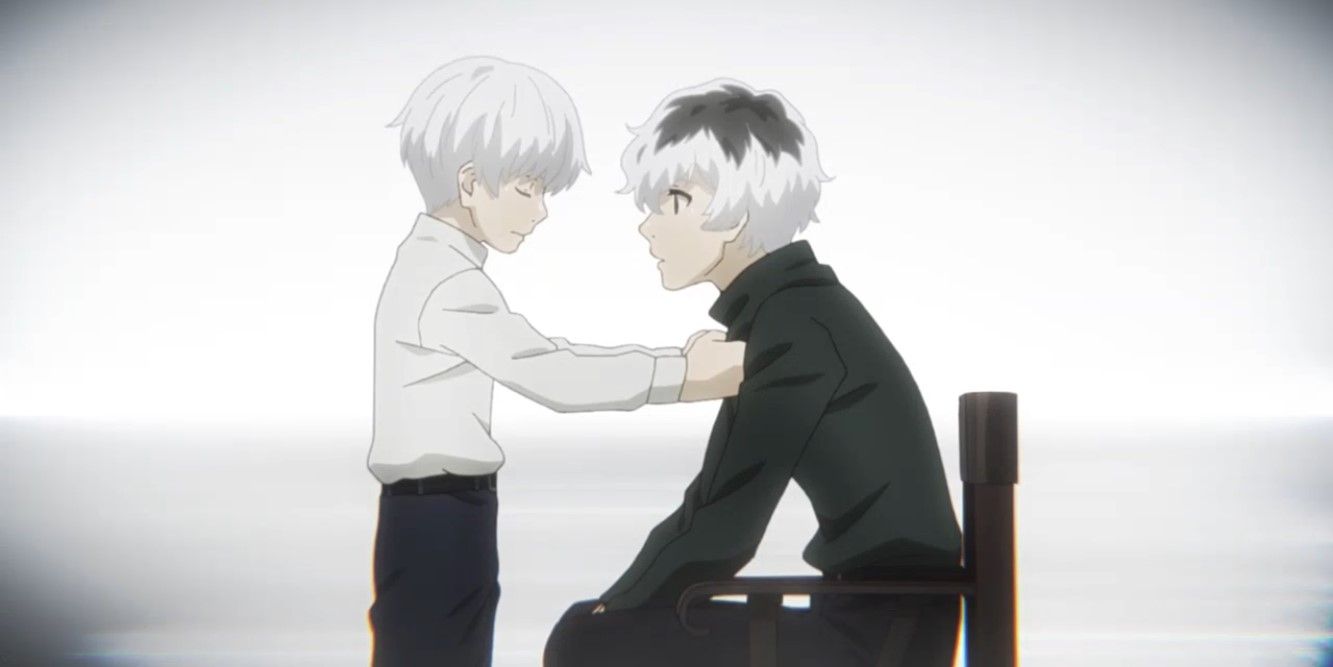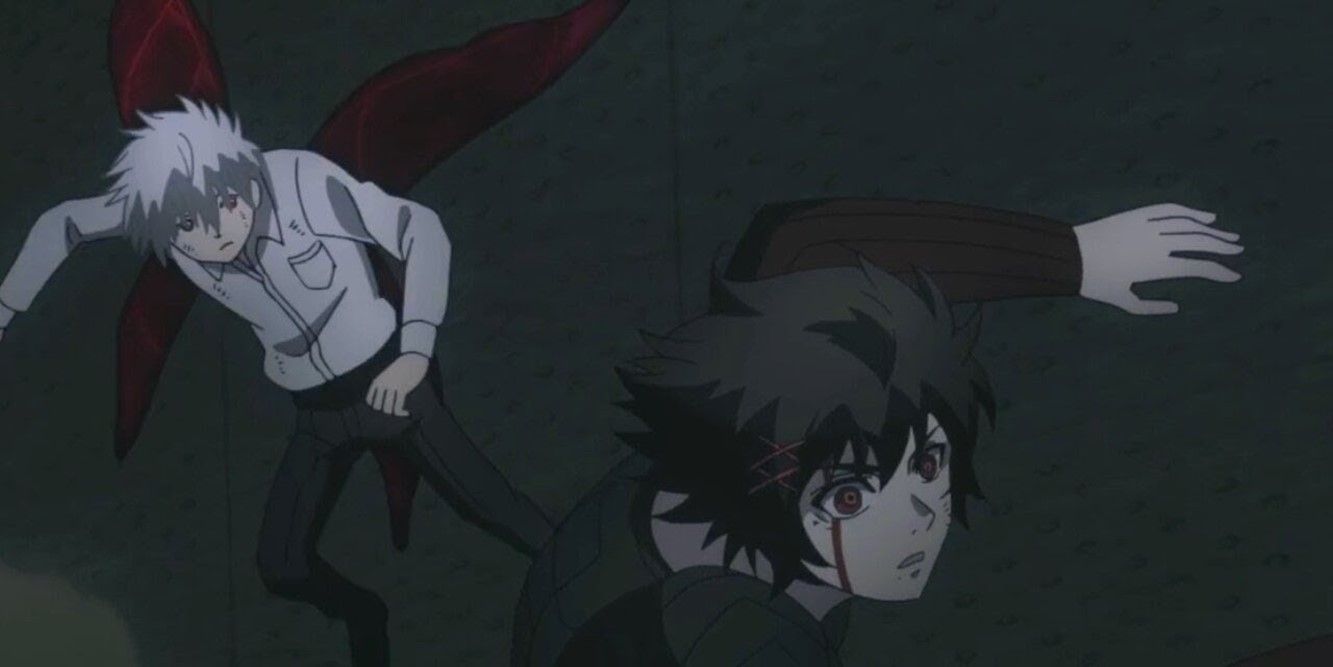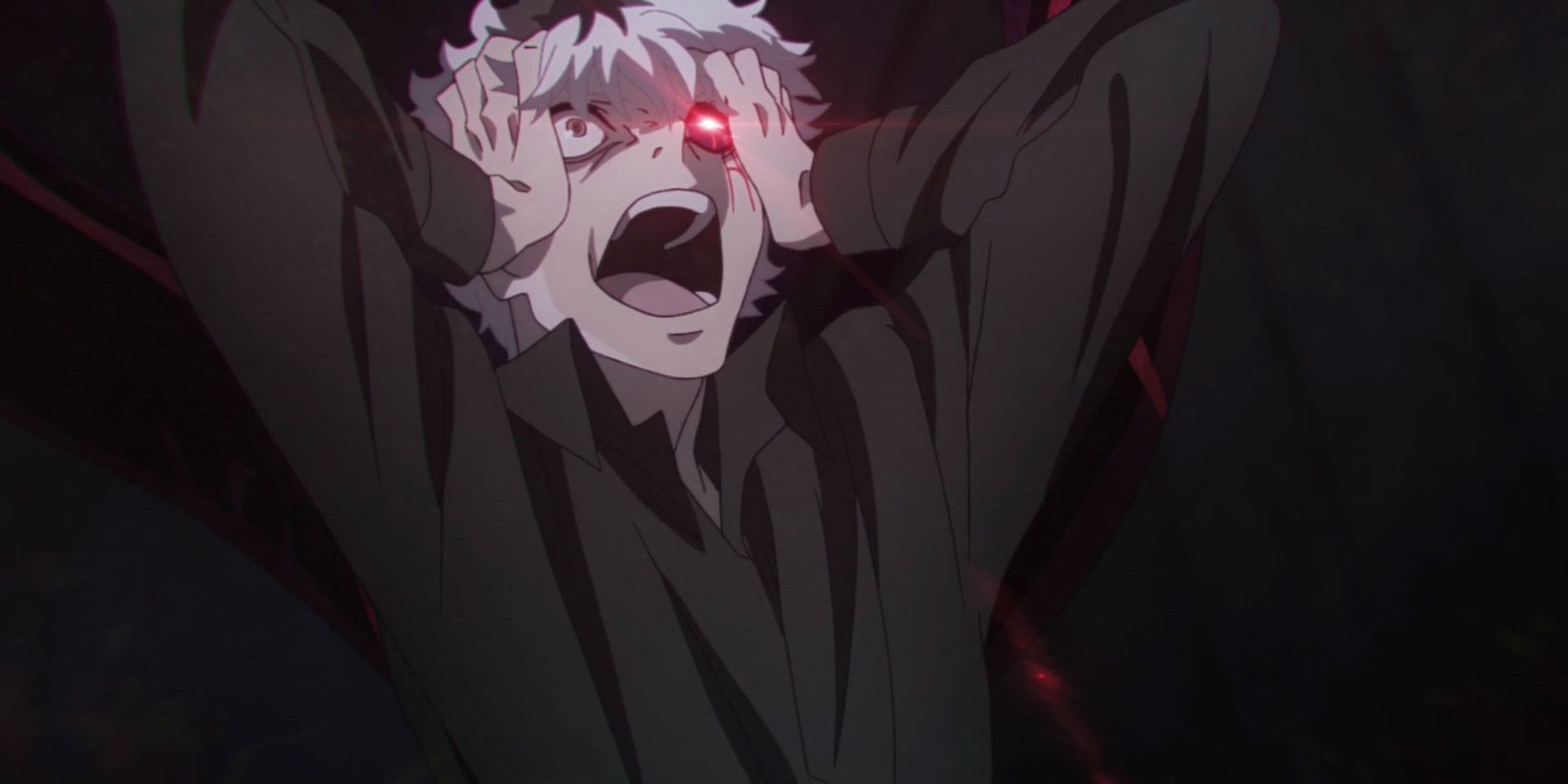How Long Will Tokyo Ghoul Re Anime Be
Tokyo Ghoul :re is 1 of the bestselling manga of the 2010s, just fans were worried when information technology got greenlit for an adaptation. Studio Pierrot, the studio responsible for the infamous Tokyo Ghoul: Root A, already had a history of disappointingTokyo Ghouladaptations. And when the series aired, fans' fears proved justified: Tokyo Ghoul :re was a disaster, somehow falling below everyone's low expectations.
Predictably, its two seasons deviated from their source fabric, moved too quickly and twisted the manga's plot irreparably. They were abysmally animated, poorly directed and unintelligible for anime-only viewers. All in all, Tokyo Ghoul :re is a serious candidate for the worst anime of the 2010s. How did it go so wrong?

From the beginning, Studio Perriot was operating on uneven ground. The concludingTokyo Ghoulaccommodation wasTokyo Ghoul Root A,aired in early on 2015. Manga readers disliked howRoot A deviated from the manga, condensing the source material and providing an anime-only catastrophe. All the same, anime-only viewers had no thought about the dissimilar endings. For Tokyo Ghoul :re,Studio Perriot chose to fleckRoot Aand return to the manga'due south plot if nothing ever happened, which wasn't a bad conclusion. However, it left a large portion of the fanbase hopelessly confused from the get-go.
Piling on the problems, it looked every bit though at that place would simply be 24 episodes to adapt 179 chapters of densely plotted material. This was especially foreboding, as there would have to be ommissions. In the showtime 12 episodes,Tokyo Ghoul :re scrapped some of import character moments, made some unexpected changes and moved at a very fast pace. Near agree, however, that the anime wasn't anything disastrous (so far). The season ended on the Tsukiyama Family unit Extermination Arc, and while it's all a bit messy, it didn't go off the rails.
With the second season, though,Tokyo Ghoul :re fell apart. Correct off the bat, shut to an entire arc was cut equally the anime lunged straight into the Third Cochlea Raid and Rushima Landing Performance. Post-obit this problematic beginning,Tokyo Ghoul :re advanced with jarring ommissions, terrible pacing and disappointing anime-only moments. Information technology was so convoluted that manga-reading YouTubers uploaded videos explaining the plot to clueless viewers. Similar to Tokyo Ghoul: Root A, fans were offended that Studio Perriot would treat its source material so poorly. Of grade, faithfully covering so many chapters in so niggling fourth dimension was an impossible job. Tokyo Ghoul :re'smanga had a rushed conclusion even without the adaptation, so mangling information technology further was non a popular decision.

Anime is a visual medium, and then the way information technology looks matters. Tokyo Ghoul: Root A may take butchered its source textile, but it provided some qualityTokyo Ghoul moments that, when viewed in a vacuum, weren't besides bad. There were some beautiful scenes, well-directed shots and even a few anime-only moments that earn their identify in the serial.Tokyo Ghoul :re has none of these. With poor animation, a lack of particular and simplistic character designs, the anime rivals the CGBerserkin terms of offensive visuals. Without exaggerating, the anime legitimately resembles a slideshow at points, and even faithfully adjusted moments fall brusk aesthetically.Couple that with some disastrous direction (poor shot composition, scene transition, etc.), and the adaptation fails in almost every regard.
The soundtrack may exist Tokyo Ghoul :re'ssaving grace, every bitTokyo Ghoulcomposer Yutaka Yamada returns to give the anime'southward stale frames a little buoyancy. Unfortunately, his soundtrack isn't utilized as well equally it could have been, and viewers will hear the battle theme "Symphonie" and various arrangements of the iconic "Licht und Schatten"enough to bore them even of these keen tracks. Even so, it'south a nice soundtrack to listen to outside of the anime. The same can be said nearly the openings: Asphyxiaby experimental stone band Cö shu Nie,and Katharsispast fan-favorite TK (vocalist ofTokyo Ghoul'due southoffset opening).

It's common for anime studios to be overworked and understaffed. That'south what happened to Studio Perriot whenTokyo Ghoul :rewas in product, already decorated with Boruto, Black Clover and other popular shows. It's unfortunate that Perriot would neglect Tokyo Ghoul (which was arguably its largest active franchise). Something like happened when Studio Madhouse was too decorated to continue Ane-Punch Man, so it gave its second flavour off to another studio. Tokyo Ghoul is a existent cash cow, so Perriot didn't want to forfeit their rights to the franchise. In the end,T okyo Ghoul :rewas discharged to Pierrot+, a smaller studio that struggled with the workload.
Tokyo Ghoul :re'sstaff also left a lot to exist desired. Animators, grapheme designers and directors from the original series were busy elsewhere, which explains how dissimilar the anime looked to compared to its predecessors.Shuhei Morita, director of the bestTokyo Ghoulepisodes out there (Episode one and 12 of the original, and Episode 12 ofRoot A) could take possibly salvaged an episode or two, just he likewise was busy with other work. Overall, the finished product boasted a profound lack of manufacture-standard endeavor in all areas. Even the promotional art (posters and such) looked like they were whipped together lazily.
Sadly, this is probably the end for Tokyo Ghoulanime adaptations. The series isn't every bit pop equally it was a few years ago, so chances of another run (possibly with a different studio) are slim. A true-blue reboot,reminiscent ofFullmetal Alchemist: Brotherhood,would exist a treat for fans, just that's only a pipe dream. For at present, information technology's best to just read the manga.
Speaking of which,Tokyo Ghoul :re is available in English language fromViz Media.
Source: https://www.cbr.com/why-tokyo-ghoul-re-worst-anime-series-2010s/
Posted by: churchaceeakell.blogspot.com

0 Response to "How Long Will Tokyo Ghoul Re Anime Be"
Post a Comment